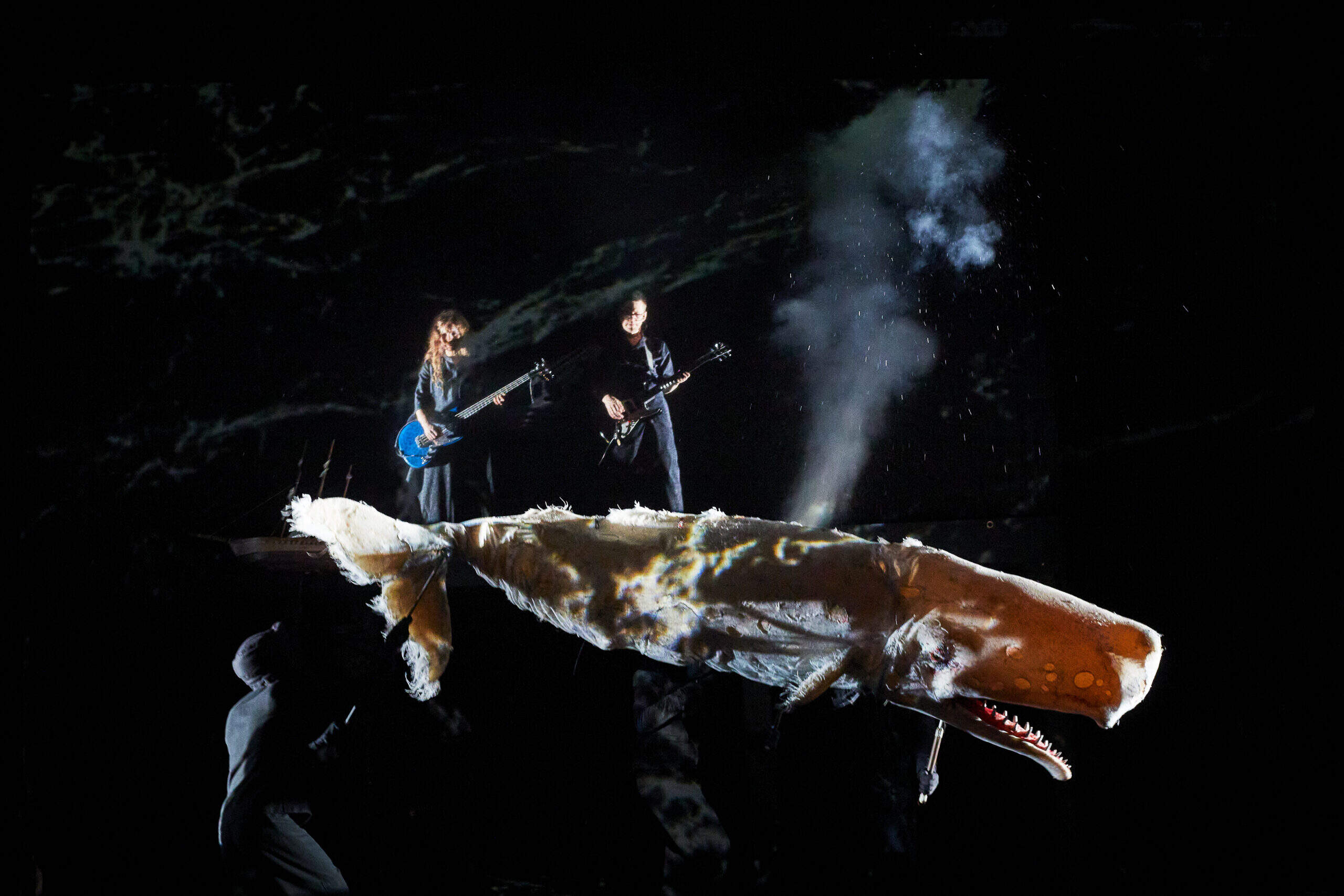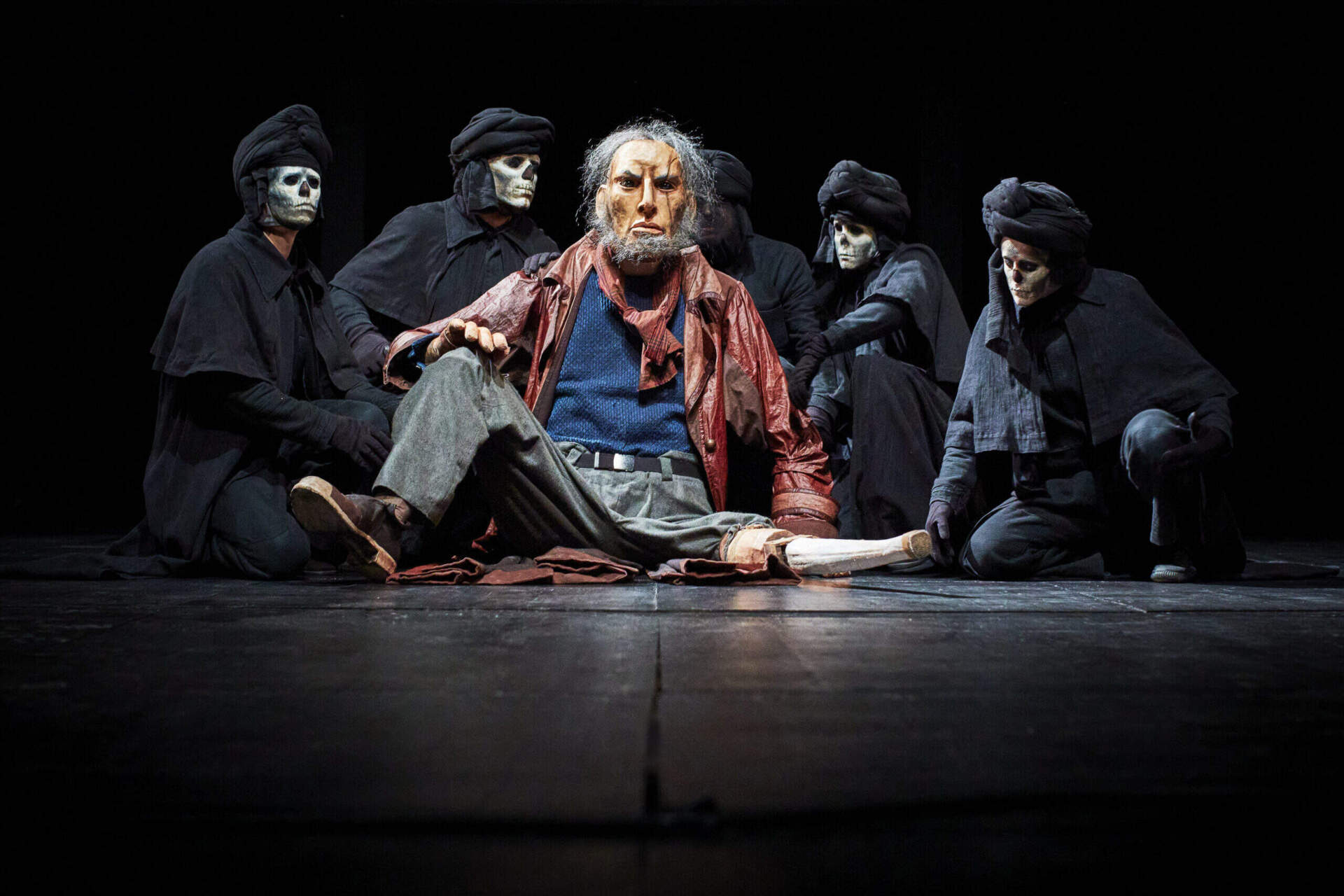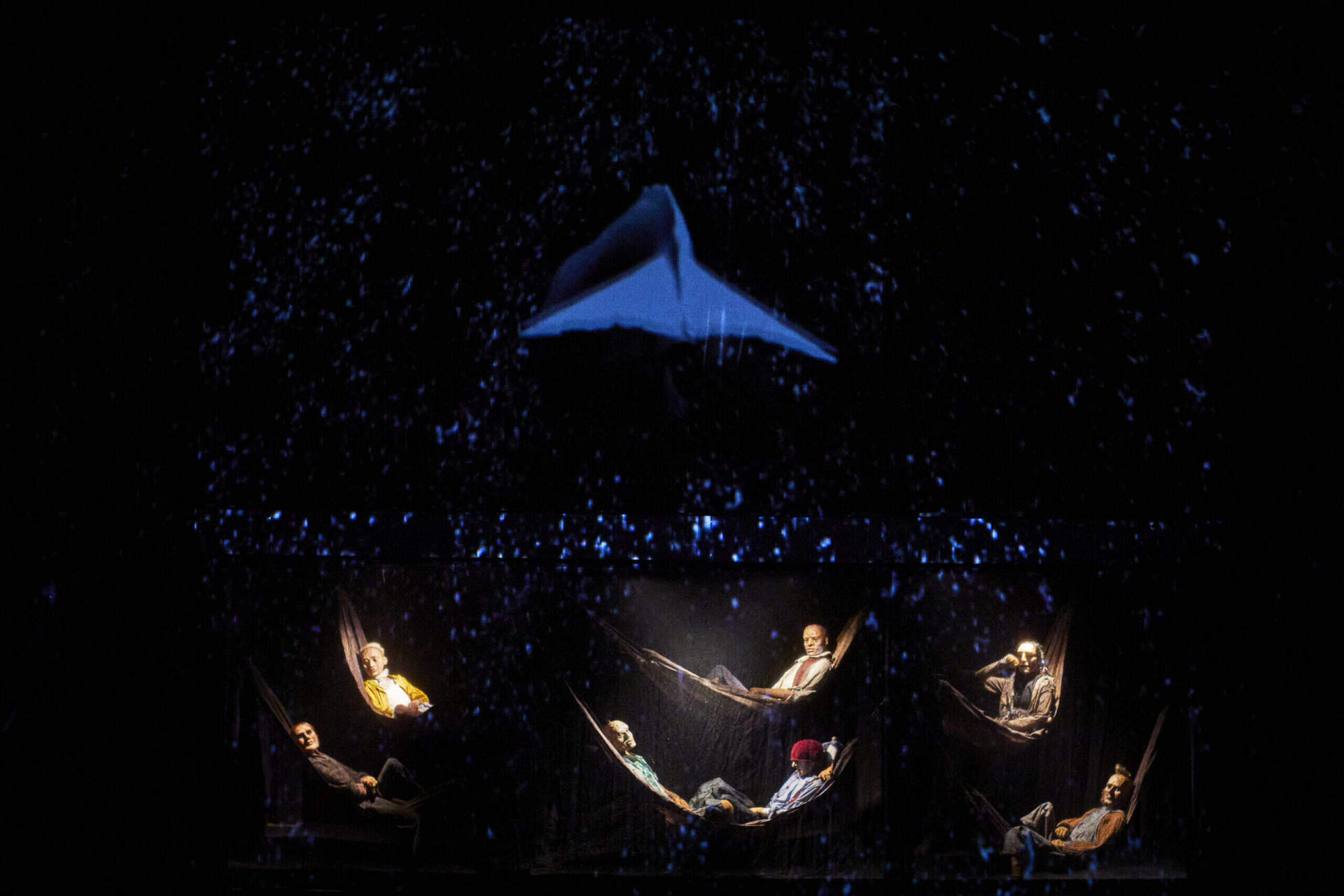Advertisement
Plexus Polaire reimagines 'Moby Dick' with puppets and a life-sized whale

A story of a whaling expedition is not too far removed from the realities many experience in their lifetimes. What seems to be a simple quest is a journey with a single-minded pursuit in mind. We grapple with nature in efforts to define ourselves, facing the unfathomable, and in those turbulent seas, we may in fact discover what it means to be human, even when our ships veer off course. These existential conditions are what the characters face in Plexus Polaire’s production of “Moby Dick,” breathing life into Herman Melville’s timeless classic.
Directed by Yngvild Aspeli, artistic director of Norwegian-French theater company Plexus Polaire, “Moby Dick” will play at the Emerson Paramount Center from Jan. 23-28, presented by ArtsEmerson. The adaptation, which originally premiered in Norway in 2020, tells the classic tale of narrator Ishmael’s voyage aboard the Pequod, where he meets Captain Ahab, a man who walks with a prosthetic leg because of an encounter that he had with the titular whale, Moby Dick. Ahab has sworn to seek vengeance on the creature, and over the course of the play, the audience will experience his obsession, his determination to master the legendary being. The story is told through the use of puppets, video projections and a “drowned orchestra,” and the website confirms that it is very much an exploration of “the unexplained mysteries of life and of the human heart.”

“Herman Melville’s story manages to capture themes that I’m interested in, in my work, like the conflict between madness and sanity, creation and destruction, how these things are finely intertwined and co-dependent on each other,” Aspeli said. “It’s a story that also manages to deal with very complicated questions and gives them recognizable and understandable form, which is something that theater and puppet theater [have] a unique capacity of doing… to make the invisible things visible.”
Aspeli said that she hopes audience members will be guided through a tour into the unknown, meeting figures like a massive, life-sized whale that appears onstage. In many ways, the show will play with perspective: at points, the puppets are maneuvered on their sides, creating what spectators observe to be an aerial or bird’s eye view of the action. Lighting masks the puppeteers, who are never quite neutral, Aspeli added, because their movements pass energy into the figures that they are manipulating, making the audience wonder at what is real and what is not.
Actor Viktor Lukawski plays Ahab, and in approaching the role, he discovered the character’s embattled self, his bitterness, but also “beautiful moments of humanity.” Finding Ahab’s voice was an important part of this work. Lukawski rehearsed the captain’s powerful, “God-like” speeches, and by the end of the show, his delivery becomes more distorted and decayed. In pursuing the whale, Ahab is in many ways motivated by his pain, as symbolized by his missing leg.

“We did a lot of research and play with this element of the phantom limb. That plays a huge part into his psyche. It’s something that he’s constantly referring,” Lukawski said. “Every time he looks down and walks, he’s reminded of this injury, this loss of limb. … He maybe hopes that he can bring that element back to himself, or at least calm this element of the phantom limb that’s haunting him.”
The 50 puppets that activate the show were created by a team led largely by Polina Borisova. She constructed many from materials such as papier-mâché, Styrofoam, foam, fabric and metal, often made with wooden skeletons. One challenge in building the larger puppets was to keep them lightweight, so that they are easy for actors to control, while ensuring that they are strong. Designing a puppet takes an understanding of character, and the structure that it’s made with can facilitate the job of the actor, Borisova said.

“It’s important, not only how the puppet can be animated by an actor, but it’s also about how it’s conceived, to be able to move in a real way,” she explained. “If it’s too stiff or too soft, it complicates the job of the puppeteer. It’s kind of a little secret, if you make a puppet that can move in a realistic way… it will almost sometimes act for itself.”
Aspeli said that she would like the production to give audiences a change in perspective, that they will emerge from the show seeing the world differently. In particular, she hopes that they catch a glimpse of the enigma that the sea represents.
“I really want the audience to be able to be taken on a journey unlike any they have been on, kind of like Ishmael… going into a dark place, with a safe guide, then being taken out of it again,” Aspeli said. “Hopefully, these things that you’ve seen, they’ve made you feel something or think something; something has shifted in one way or another.”
